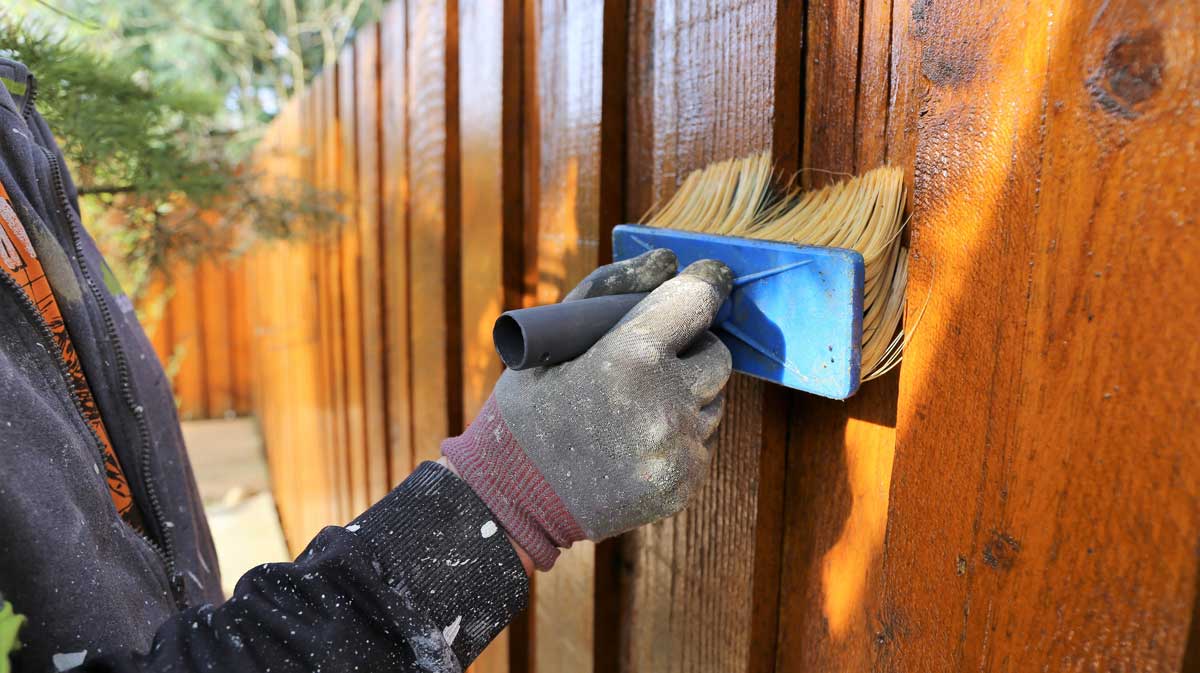
Regional Tips: How to Stain Your Fence in Humid or Dry Climates
Proper upkeep protects outdoor surfaces from dampness or dryness that can cause impairment. When deciding how to Stain Your Fence Cedar Park, you must know how local weather variations affect preoccupation, drying, and durability. Staining methods vary in hot, humid, or dry environments because each condition influences how the coating bonds with wood. Choosing the best timing, preparation, and product type enhances both color and protection. Simple planning can make the process effective while extending the lifespan of your barrier. This guide shares useful regional suggestions for applying coatings successfully without complications.
Assess Local Weather Conditions
Observing the local weather pattern helps determine the right moment to begin staining. Avoid extreme heat or wet conditions because they affect how well the material settles into the surface, leading to uneven finish issues.
Recommended Application Tools
- Use suitable tools that make the job neat and efficient with steady coverage.
- Apply using a soft brush for corners with detailed edges, ensuring smooth texture in difficult spots.
- Choose a roller for large panels to quicken the process and maintain balanced strokes effectively across the surface.
- For extended areas, consider spraying to achieve even coating layers without visible overlaps or dark patches.
Choose the Right Product
Selecting the correct coating type ensures longer protection and smoother coverage. Some formulations suit humid conditions, while others are ideal for dry zones where intense sunlight can weaken wood fibers quickly.
Product Adaptation Techniques
- Adjust methods according to the location’s moisture for best outcomes.
- In moist weather, use thinner coats to prevent slow drying that causes sticky surfaces.
- In dry regions, select denser coats to evade fast evaporation that decreases hue depth.
Moisture Balance Matters
Discovering a balance between dampness and dryness is vital. If the material absorbs too much water, it cannot grip the stain correctly; if too dry, the exterior becomes rough. Keeping medium-level wetness keeps the coating consistent.
Maintenance Scheduling
- Plan reapplication intervals to keep protection strong throughout seasonal transitions.
- For humid areas, reapply every one or two years since higher moisture weakens absorption faster.
- For dry conditions, refresh the coating every three years to maintain uniform color retention.
- Regular cleaning helps delay the need for early re-staining sessions.
Drying Time Observation
Patience matters when waiting for the coating to settle completely. Let each layer dry thoroughly before applying another, preventing sticky surfaces that trap airborne dust particles and reducing overall finishing quality and shine.
Comparison of Climate Behavior
| Climate Type | Common Issue | Suggested Approach |
| Humid Regions | Slow drying, mold | Use lighter coats, apply early morning |
| Dry Regions | Quick evaporation | Choose oil-based, apply later evening |
| Mixed Weather | Uneven drying | Monitor temperature and humidity levels |
Consistent observation strengthens wood performance. Applying balanced methods helps resist temperature changes effectively and ensures pride in every completed structure. Whether in moist or dry regions, staying aware of timing and preparation achieves exceptional endurance. Always test finishes in small hidden sections and keep surfaces clean throughout maintenance. The ability to Stain Your Fence Cedar Park with care ensures lasting protection, vibrant color, and simple upkeep for years, giving your outdoor structure an attractive, long-lasting shield.



